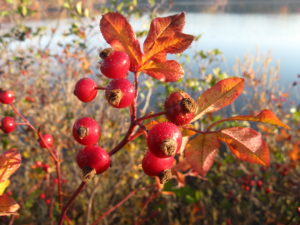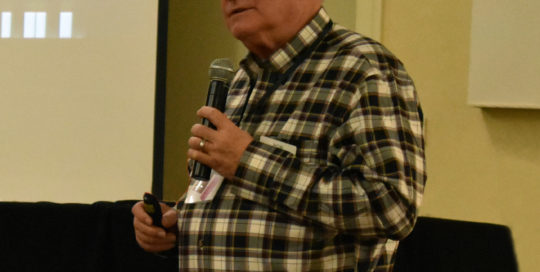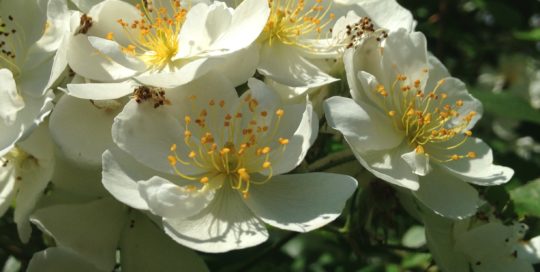October Musings and a New Version of the CR Manual
Views: 817

Under Pressure
Back some dozen years ago or so, one of my customers told me that I work better under pressure. He knew that he could push me, and I would get what he needed done for him. To his credit, I always got his work done on time, but it wasn’t without putting in long hours with many sleepless nights (along with some major juggling acts with other jobs for other customers along the way).
Now, here we are on the last day on the month, I am sitting down with my dad’s blue Esterbrook pen filled with purple ink penning today’s blog at 12:01 a.m. on October 31, 2020. Yes, there’s plenty of pressure getting my blog done in under 24 hours. I hope that the quality of this blog is what I expect. While I may be penning this column at this late hour, ideas as to what to write about have been ongoing all month long in my head. Unfortunately, my talents were needed elsewhere in this great hobby that we all call “roses.” I’m also needed to work longer hours than usual at my workplace as the economy reopens up from COVID-19 economic setbacks.
A New Manual
A couple of years ago, I volunteered to help out with the reorganization of the CR Manual to help update it and make it more readable (both from a content point of view and a visual point of view). Deadlines came and went in October for the upcoming ARS Board meeting in December, and this month’s blog would have to just wait until later in the month until after the Manual was done.
Our committee worked extremely hard, and we have revamped the Manual, by updating the text, and adding more consistency to style/the visual end. Through teamwork and some help from many other rosarians beyond our committee, we have the October, 2020 version of the Manual ready for ARS Board approval in December. Among the many additions/changes that we made, was the inclusion of an article that we used as Chapter 10 in the Manual (Rose Diseases) written by Dr. Mark Windham and his team at the University of Tennessee.
Although we have thanked them in our introduction to Chapter 10, I’d also like to thank Mark and his team here for allowing us to use their work, as well as thank the other members of the National CR Advisory Committee, The ARS National Co-Chairs of Consulting Rosarians, Dave and Gerry Mahoney, Dr. Tommy Cairns, and the countless other rosarians through the years who have contributed to all versions of the Manual – past, present, and future. It is something that we are proud of being a part of. I’m sure countless rosarians will continue to benefit from our work for many years to come.
Busy, busy, busy
I was busy redoing the final typesetting/editing portion of the CR Manual. However, I should have been writing and publishing this month’s blog. My initial plans were to finish the Manual early enough in the month, so that I could write about the colors that are seen throughout New England every Autumn, how great and wonderful these colors are, and how lucky we are to live in an area where we can enjoy fall this way. Unfortunately, I was not able to work on the blog until today. By now many of the leaves have fallen, and a blanket of white snow now covers the region.
A different direction for my October blog
I do feel extremely lucky that I live in New England and can attest that all of what I have written here is indeed true about the region. I never hesitate to say so out loud, but I decided to take this blog in a different direction. Many, many people have written about fall in New England and the exquisite colors that come each fall, and there really isn’t that much new or different I could add that hasn’t already been said. But, there is so much more than colorful leaves and landscapes during Autumn in New England.
Fall colors beyond the leaves
The roses are continuing to bloom, and will probably continue up until the first hard frost(s). The intensity of these blooms tends to be more vivid and eye-catching with the reduced light levels. Many times these same blooms last a lot longer than during our Spring and Summer flushes. Our many once-blooming roses give added interest when the hips that they produce start to change color from green to yellow, brown and/or red. These colorful hips add another dimension to our gardens that set the stage for winter. My daughter’s boyfriend commented on my R. glutinosa that set some 30-35 hips that shined like red beacons for weeks. This display of hips far outdid the display of blooms that the rose produced this past Spring.
Mother Nature and her fall activities
The colorful leaves fall to the ground throughout Autumn and through to the freezing temperatures of winter. Mother Nature feeds her natural world through these leaves as they break down into her own special compost blend that has served her well for eons. These fallen leaves create homes and hiding places for many small creatures to use. Seeds are strewn far and wide to spread nature’s bounty. Fruits, nuts, berries (and rose hips) are gathered and stowed away by nature’s critters who are preparing for their long winter naps. These critters never do end up consuming all of their hidden bounty. Those uneaten seeds germinate creating new plants instead.
What to do with your rose hips
for more adventures in roses
Speaking of hips, for those of us who are interested in creating his/her own new roses, it’s time to start to harvesting your hips as they to yellow, brown, and red and prepare the seeds (acnes) for planting. The first thing that I do is to get small plastic sandwich bags with a Ziploc® seals and a permanent marker to identify the mother plant. I take as many hips as I want along with all of my intentional crosses that have “taken.” I put only hips from one seed parent in any one bag, mark the name of the seed parent on the bag, and zip it closed when done. I take hips from as many roses as I want and bring them to an area where I can shell them and get them ready for their next phase called stratification.
Stratification is where the seeds are put in a refrigerator for an extended period of time to mimic going through a normal winter that Mother Nature would normally provide. I usually let my seeds stratify until mid-late January or until they start to germinate in the refrigerator. I’ll write more about planting these seeds in a future blog.
Preparing your seeds for stratification
Tutorial
When shelling my hips to extract the seeds within, I first take the hips out of the bags. I prepare either a coffee filter or paper towel to accept the seeds once extracted. I then take my pocket knife and cut open the hips to expose the seeds within. A regular kitchen knife also works well. I take the seeds and place them in the middle of the coffee filter/paper towel. Once I have extracted all of the seeds within a certain cross/seed parent, I crumple up the coffee filter/paper towel in a ball with the seeds inside and wet thoroughly.
I squeeze any excess water place the balled up seeds in the plastic bag with the seed parent written on it. I repeat as necessary for any additional crosses with the same parent. Note that I do not mix pollen parents together in the same coffee filter/paper towel. This way I know what the cross is of any newly germinated roses. I take any excess air out of these bags to save space in my refrigerator. I repeat as necessary until I extract all of the seeds.
Then, I put all of the bags in a small box for business cards (~3 3/4″ x 2 1/4 x 7″). From there, I put it in the vegetable crisper within the refrigerator. I do not put the box in the freezer, although I have had one rosarian misinterpret my instructions. He told me that he had put his seeds in the freezer, and many of the seeds still germinated.
Other details
I find that if I prepare my seeds they way I have described, I am able to put quite a few seeds in a very small confined space. This also helps to insure that my wife does not consider the seeds an intrusion on the space I use in her refrigerator/kitchen. Please note that many hybridizers also soak their seeds in a solution of water with a small amount of Captan added. This helps thwart the formation of funguses on their seeds. Some other hybridizers soak their seeds in a water/drain cleaner solution to help break down the seed coats. I have done both of these procedures in the past. I do not currently prepare my seeds with either additional procedure. Usually, I don’t have any extra available time when I’m preparing my seeds. Also, I did not see any appreciable benefit from not doing so.
I would highly recommend those who wish to pursue germinating rose seeds to create new roses to research these methods as well as other procedures for preparing seeds and visit the Rose Hybridizers Association webpage for additional tips on creating new roses. Be sure to check out their Forum as well while you are there. There are plenty of knowledgeable hybridizers there to answer your questions. Good luck! To those of you pursuing this part of the rose-growing hobby, and may all of your dreams turn into “queens.”
Epilogue
This blog was originally written as described above with my dad’s blue Esterbrook pen filled with purple ink. The color of the ink was not distracting when I was writing. The words flowed extremely well while writing them. This is my last blog before our upcoming election on Tuesday, November 3rd. I have already voted through early voting a week or so ago. It was the fastest that I have ever been able to vote. It took a whopping five minutes to go from entering the facility to completion of my ballot.
I would like to encourage all to participate in this year’s electoral process. It is our duty as Americans to vote, and all political affiliations are welcomed in roses. Roses transcend politics, and will continue to do so for years to come. I wrote a month or so ago that the rose can be the great unifier, and its power can never be underestimated. There are many other great unifiers in this world, and one of the most powerful is the right to vote. We may not be unified in our selections as we vote. However, we are unified in our ability to vote as we please. Too many people have lost their lives in protecting your right to vote. Use this right whenever you get the chance to do so.
Meet Andy Vanable
Andy's Recent Posts

The Rose-Growing World Loses an Icon – Bob Martin






